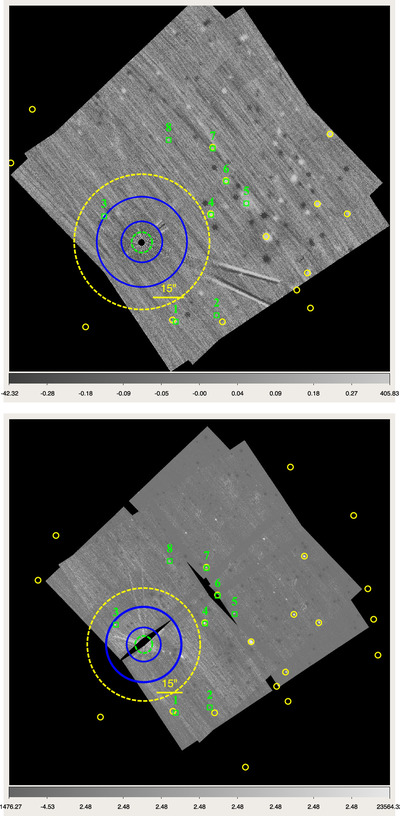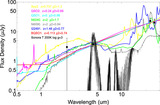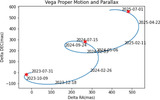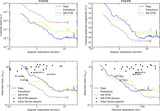Image Details

Caption: Figure 1.
(Top) the full-frame F444W image generated using ADI. The dark holes bracketing each bright source are an expected artifact of the roll subtraction and serve as a check for the reality of each object. The eight brightest F444W sources within 60″ of Vega and not obviously extended are indicated (Table 4). In the figure north is up and east is to the left. The large circles delineate features seen in the MIRI data (K. Y. L. Su et al. 2024, in preparation): the dotted yellow circle denotes the outer extent of the halo seen in the F2550W image (33″), the blue circles denote the extent of the Kuiper Belt analog seen in both MIRI and ALMA (10″–22″), an inner disk extends inward to the star, while the dotted green ring marks the location of a dip in the dust distribution seen around 5″–10″. Small yellow circles denote Gaia sources brighter than G < 18 mag. (Bottom) full-frame image for F210M, with PSF subtraction performed with ADI + RDI. The many dark spots represent sources in the field of the reference image. Intensity units are in MJy sr−1.
Copyright and Terms & Conditions
© 2024. The Author(s). Published by the American Astronomical Society.












